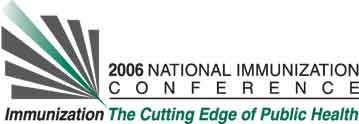Michelle G. Goveia1, Peter Hastings, Zoe Rodriguez
2, Michael J. Dallas
1, John Boslego
1, and Penny Heaton
1. (1) Merck & Co., Inc, West Point, PA, USA, (2) Clinical Res Cntr, Univ of Puerto Rico School of Medicine, San Juan, PR
Learning Objectives for this Presentation:
By the end of the presentation participants will be able to:
1. Understand efficacy and safety profile of RotaTeq™ in premature infants
Background:
Data on investigational vaccines in premature infants is typically not available until postlicensure. Premature infants appear to be at greater risk of hospitalization from rotavirus gastroenteritis (RV GE) than term infants.
Objectives:
We report safety and efficacy results of a pentavalent (G1, G2, G3, G4, and P1A) human-bovine reassortant rotavirus vaccine (RotaTeq™) in premature infants enrolled in a large-scale, blinded, placebo-controlled study.
Methods:
During 2001-2004, healthy infants ~6-12 weeks chronological age were randomized to receive either 3 doses of oral vaccine or placebo ~4-10 weeks apart. Within the large-scale (N=69,274) study, all infants were followed for serious adverse events (AEs); 2 sub-studies were conducted to assess non-serious AEs and vaccine efficacy against RV GE. RV GE was defined as vomiting and/or >3 watery or looser-than-normal stools within 24-hours and RV antigen detection by EIA with RT-PCR confirmation. G1-G4 cases occurring at least 14 days Postdose 3 were included in the primary analysis. RV GE severity was defined using a validated clinical scoring system.
Results:
In total, 2007 (976 vaccine:1031 placebo) premature infants 25-36 weeks gestational age were vaccinated. The incidence of serious AEs was similar among vaccine (5.1%) and placebo (5.7%) recipients. In sub-study of 308 infants evaluated for all AEs, the incidence of fever, vomiting, and diarrhea was comparable between vaccine and placebo recipients. Among 204 infants evaluated for efficacy, RotaTeq™ prevented 70.3% (95% CI:-15.4,94.7) of RV GE of any severity, which is comparable to efficacy in term infants [74.2%; 95% CI:66.8,80.1]. Two cases of severe RV GE were reported among premature infants, both were placebo recipients.
Conclusions:
RotaTeq™ was generally well tolerated and efficacious in preventing RV GE in healthy infants born prematurely.
See more of Posters
See more of The 40th National Immunization Conference (NIC)

